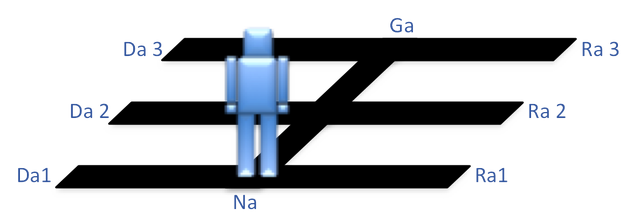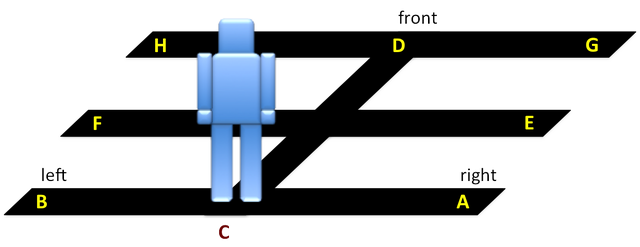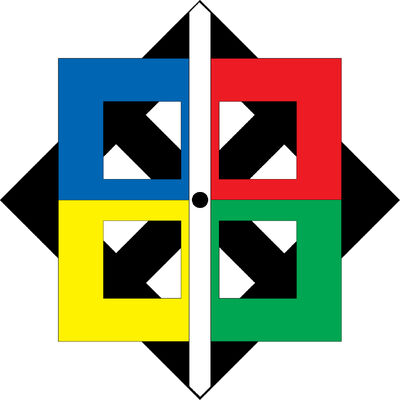In taekwondo the floor pattern or lines of a form refers to the lines traced out on the floor while performing the taekwondo form. In Korean, this is sometimes called yeon-mu (연무), the same term used to denote a military drill. In karate the equivalent term embusen is used, though embusen can also refer to the spot where the form (kata) begins.
Kukkiwon/WT Lines and Directions[]
When performing Kukkiwon/WT-style Taegeuk poomsae, the directions Ga, Na, Da and Ra are sometimes referenced.
- From the ready stance, Ga is the direction straight in front of you. (Helpful neumonic: "ga" - go, the direction you'll be going in during this form)
- Na is the direction directly behind you. (Helpful mnemonic: "na" is on your backside, your nethers.)
- Da is the direction on your left side.
- Ra is the direction on your right side. (Helpful mnemonic: "ra" is right.)
Why are these directions used instead of "left" and "right"? The idea of Ga Na Da Ra is that these directions are independent of your current orientation. In other words, Da is always the left direction determined by the initial ready stance; Da is always that direction no matter where you are in the form.
For Taegeuk forms, the terms Da 1, Da 2, Da 3, etc. refer to the Da and Ra directions on each of the three lines of the form.
ITF Lines and Directions[]
In ITF-style taekwondo, a similar grid is often used to reference the various directions. Here, letters of the alphabet are used.
ATA Lines and Directions[]
ATA-style taekwondo gets around this problem in a very different way: all forms are performed by starting facing East. In this way, the directions can always be specified unambiguously as North, South, East, West, Northeast, Southeast, etc. ATA forms are always performed along the lines of the Songahm Star.
See Also[]
References[]
- Embusen on Wikipedia


